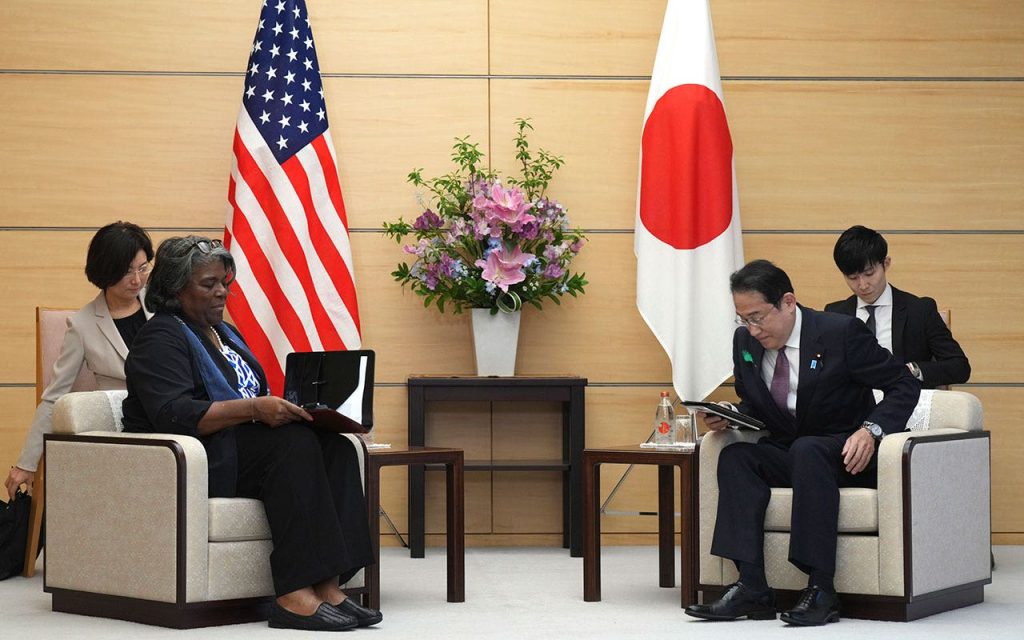Linda Thomas-Greenfield, the American envoy to the United Nations, recently visited Nagasaki, Japan, becoming the first U.S. cabinet member to do so. During her visit, she emphasized the importance of nations possessing atomic weapons to pursue nuclear disarmament. Calling for cooperation to prevent the spread of nuclear weapons globally, Thomas-Greenfield advocated for arms control measures. She toured the atomic bomb museum in Nagasaki and stressed the significance of dialogue and diplomacy in the face of a growing nuclear threat in the region. Thomas-Greenfield highlighted the need to work together to create an environment for nuclear disarmament and prevent the spread of nuclear weapons worldwide.
The United States dropped the world’s first atomic bomb on Hiroshima on August 6, 1945, resulting in the destruction of the city and the deaths of 140,000 people. A second attack on Nagasaki three days later killed an additional 70,000 people, leading to Japan’s surrender on August 15, 1945, which marked the end of World War II and its nearly half-century of aggression in Asia. The visit by Thomas-Greenfield to Nagasaki was viewed as a significant gesture in promoting momentum for nuclear disarmament on an international scale during a time when the world is facing a severe environment surrounding atomic weapons. Nagasaki Governor Kengo Oishi believed that her visit and first-hand experience at the museum would send a strong message for the need for nuclear disarmament to the international society.
Thomas-Greenfield’s visit to Japan followed Prime Minister Fumio Kishida’s official visit to the United States, as part of efforts to deepen Washington’s trilateral ties with Tokyo and Seoul. During her visit to South Korea, she engaged in discussions with South Korean officials, met with defectors from North Korea, and visited the demilitarized zone. She mentioned that the United States is exploring the establishment of a new mechanism for monitoring North Korea’s nuclear weapons program, in response to Russia and China blocking U.S.-led efforts to increase U.N. sanctions on North Korea due to its ballistic missile testing since 2022. The deepening security ties between the United States, Japan, and South Korea are in response to growing tension in the region from North Korea and China.
Efforts to launch the new system for monitoring North Korea’s nuclear weapons program in the near future are uncertain, with challenges arising from opposing views among permanent Security Council members, particularly concerning Russia’s war on Ukraine. The U.N. Security Council had previously established a committee to monitor sanctions on North Korea, with the mandate for its panel of experts to investigate violations being renewed for 14 years until last month when Russia vetoed another renewal. The panel of experts reported investigating 58 suspected North Korean cyberattacks between 2017 and 2023, valued at approximately $3 billion, with the funds reportedly being used to support the country’s weapons development.
Thomas-Greenfield’s visit to Nagasaki underscored the importance of continued dialogue, diplomacy, and international cooperation in promoting nuclear disarmament and preventing the spread of nuclear weapons. Through her visit and engagement with Japanese officials, she aimed to strengthen ties between the United States and Japan, as well as with South Korea, in response to security challenges posed by North Korea and China. The focus on arms control measures and the need for a collaborative approach to address global nuclear threats were highlighted during her tour of the atomic bomb museum in Nagasaki. The visit served as a reminder of the devastating consequences of nuclear weapons and the urgent need for countries to work together to achieve a world free of such threats.


